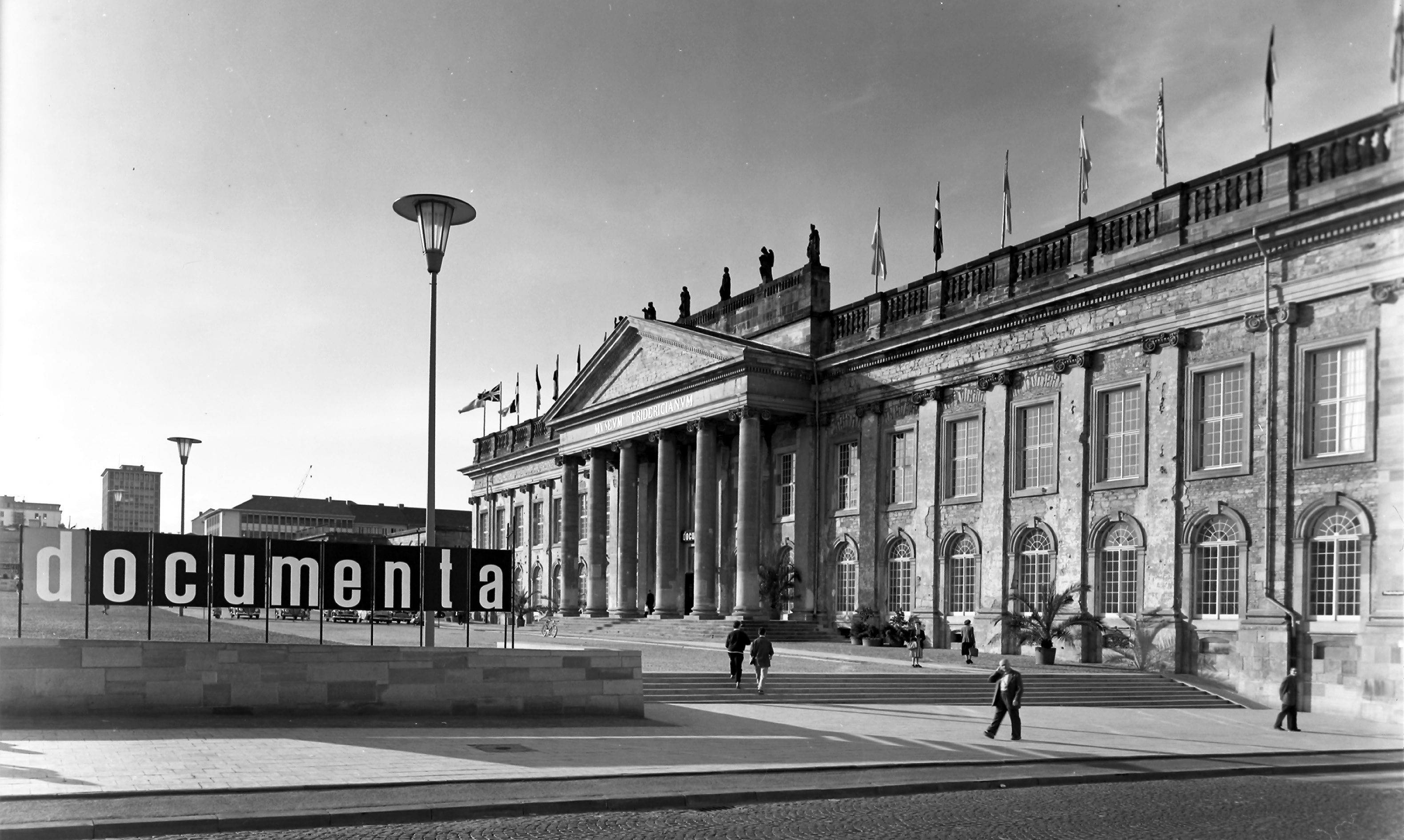 Life behind ruins: Constructing Documenta
Life behind ruins: Constructing DocumentaJune 2013
MIT SMArchS Graduate Thesis in History, Theory and Criticism
Advisor: Mark Jarzombek
Reader: Caroline Jones
A transnational index of contemporary art, documenta in its current form is known in the art world for its scale, site-specificity and rotating Artistic Directors, each with their own theme and agenda. On a unique schedule, the expansive show is displayed in Kassel, Germany from June to September every five years. The origins of the exhibition-event are embedded in the postwar reconstruction of West Germany and a regenerative national Garden Show. This thesis focuses on the architectural condition of the first documenta in 1955, which I argue has ultimately shaped the nomadic and parceled form of documenta as it evolved. In a liminal space between a violent, isolated history and a hopeful, democratic future, the organizers of documenta appropriated the damaged, but centrally located Museum Fridericianum as shelter for an exhibition of modern art.
I trace the early history of the siting and architecture of the Museum Fridericianum and central urban plaza, the Friedrichsplatz, to unfold the urban planning schemes and controversies of the 1940s and 50s. In the midst of replanning, the national Garden Show– the Bundesgartenschau, a catalyst for economic regeneration as a tourist attraction and proponent of urban parks, offered the support needed for the germinating plans for an art show that would be called documenta. Arnold Bode, a designer, painter and professor at the Art Academy in Kassel took advantage of the Bundesgartenschau exposure and funding to install an exhibition of modern art in the damaged neoclassical Museum Fridericianum. Although the details of the building’s restoration are often overlooked, the thesis examines the built conditions of Bode’s Fridericianum in an attempt to reposition documenta in an architectural history. I argue for the influence of Kassel’s urban and landscape history on the staging of documenta, and in turn, the exhibition’s dialogue with the form and ideology of the Bundesgartenschau. In displaying the architecture as part of the exhibition, Bode resurrected the Enlightenment ideology that birthed the building and reinterpreted it for a postwar message. Now one among many biennial format global exhibitions, documenta offers a unique and compelling confluence between the subject’s relationship with landscape, urban design, architecture, exhibition design and art, based on its inception in 1955 in the Museum Fridericianum.